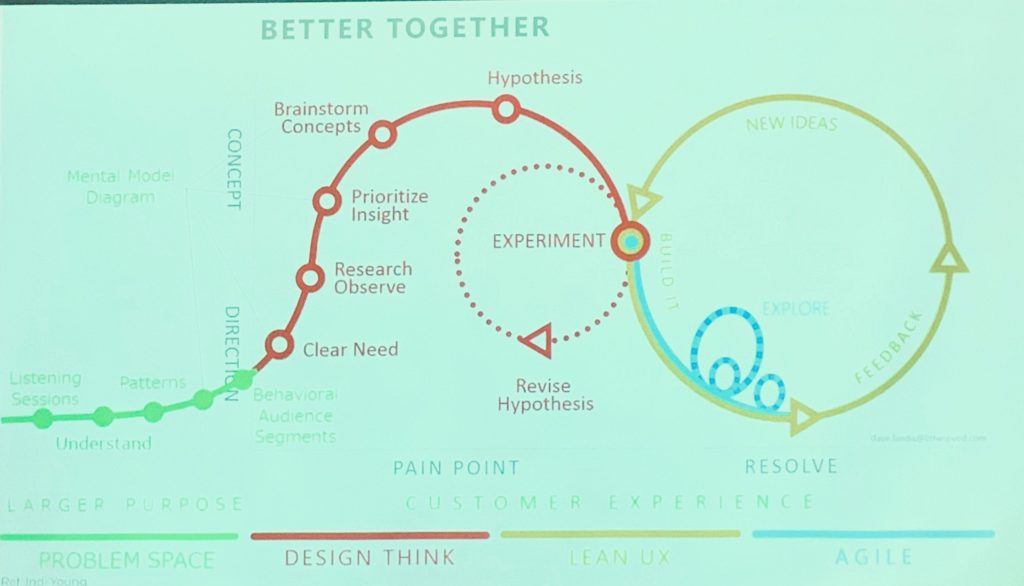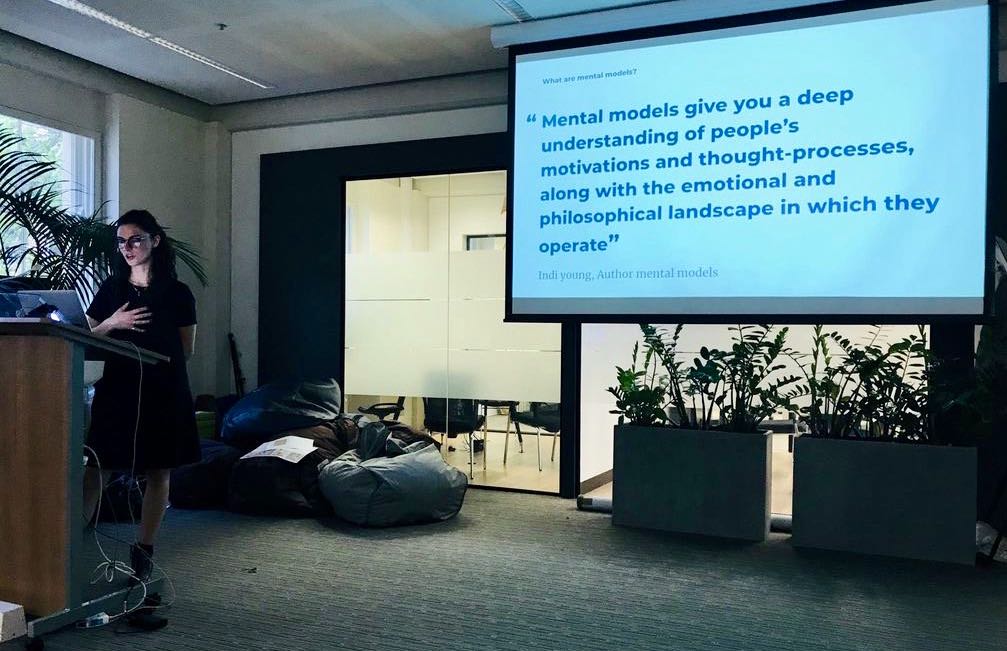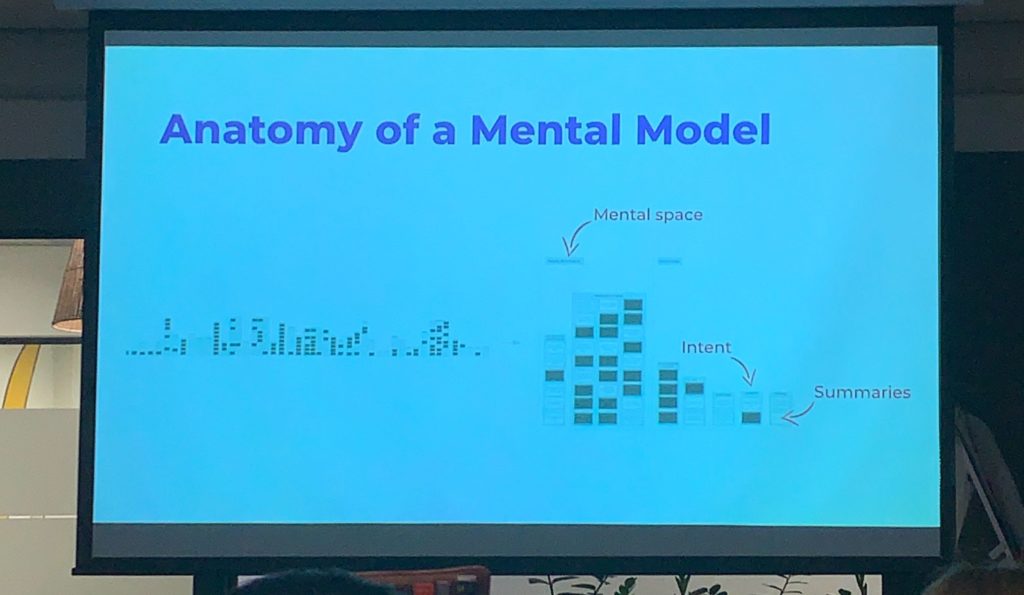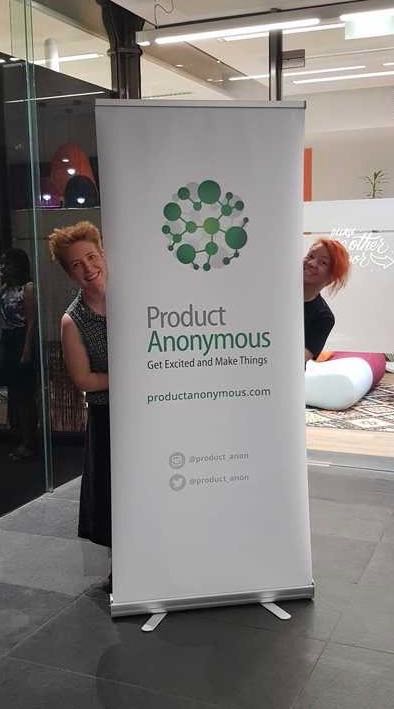Can you believe that another year has flown by? With so much happening, it’s not surprising that it has gone by so quickly. Eight meet-ups, ranging from roadmaps to Wardley Maps, exploring continuous discovery and mental models, diving into OKRs and NPS, and putting ourselves in the shoes of some entrepreneurs. Amongst all this goodness, we also had another Leading the Product Conference and Product Camp!
For our final event of the year, Tafida Negm, an independent Human-Centred Researcher and Designer with a background in Marketing and Psychology, took us through the Mental Models framework by Indi Young.
The Problem Space and the Solution Space
Most of us will be familiar with Gartner’s Design Thinking, Lean Start Up, & Agile Delivery diagram. However, according to Indi, that’s all part of the Solution Space where past work informs future work. Why do we feel so comfortable here? Because we’re rewarded for ideas – and we’re rewarded for speed of delivery.
With mental models, we try to move earlier in the cycle and focus on the person and what they are trying to achieve.
- What are they thinking?
- How are they reasoning their way towards their intent?
- What are they feeling?
- What are their beliefs that underpin their (in)decision or actions?
If we can understand this & develop true empathy, then we can have a better opportunity to design an aligned solution and have the customer think:
‘Wow, it’s like that product was made for me’

What are Mental Models?
This is a bit of a loaded question, as it is applied in so many different contexts, from psychology, to machine learning and behavioural perspectives, there are little different nuances.
Indi Young defines them as: “Mental models give you a deep understanding of people’s motivations and thought-processes, along with the emotional and philosophical landscape in which they operate.”
You may have seen them represented as a skyline, but we’ll delve into that a little more in a moment.


Listening Sessions, Cognitive Empathy and Patterns of Intent
Tafida led us through a few exercises because what better way to learn than to get hands-on? We started with listening sessions, where we used active listening to try to develop cognitive empathy.
The aim of cognitive empathy is to gain that deep understanding of people. You want to understand so well that you could walk in their shoes and make decisions exactly as they would.
How many listening sessions should you do? As many as you can, until there are no new themes coming through.
After conducting listening sessions, it becomes time to document and synthesise the results by grouping or looking for patterns based on intent (which creates the towers in the skyline visual). We group the towers into mental spaces.
Next comes identifying the different mental spaces that people are going through. Then you can start arranging the concepts into your own skyline.
Once you have built your mental model, which includes the thinking styles that people go through, you can use it in many ways:
- Map your organisation’s support underneath the respective towers to show where you have gaps.
- Overlay competitor capability for analysis.
- Broaden your market by supporting more thinking styles.
- Overlay other data (usability metrics)
- Many more…

When to use Mental Models?
There is a range of scenarios where researching Mental Models can be useful, such as:
- When you want to innovate in a new direction;
- Strategise broader and farther than your current solution;
- When you spend a lot of time re-architecting / re-inventing;
- When your existing user research is fragmented; or
- You recognise you are out of touch with your audience:
- You think everyone is your user
- Make-believe and assumptions drive design decisions
- No improvements after test and iterate cycles.
Another great benefit is the research can be re-used for other problems, as we’re not focusing on solution space.
Resources and Further Reading
- Tafida Negm on LinkedIn
- Indi Young’s website
- Practical Empathy & Mental Models – Indi Young
- Listening Well – William Miller
- Mixed Methods – Sam Ladner
- Technically Wrong – Sara Wachter-Boettcher
Thank you Envato for hosting our last event of 2019, and all our Prod Anon volunteers that have helped throughout the year.

The next Product Anonymous will be February 2020. Sign up for the newsletter, follow on Twitter or Meetup to stay in touch over the break. Have a festive amazing couple months!!

